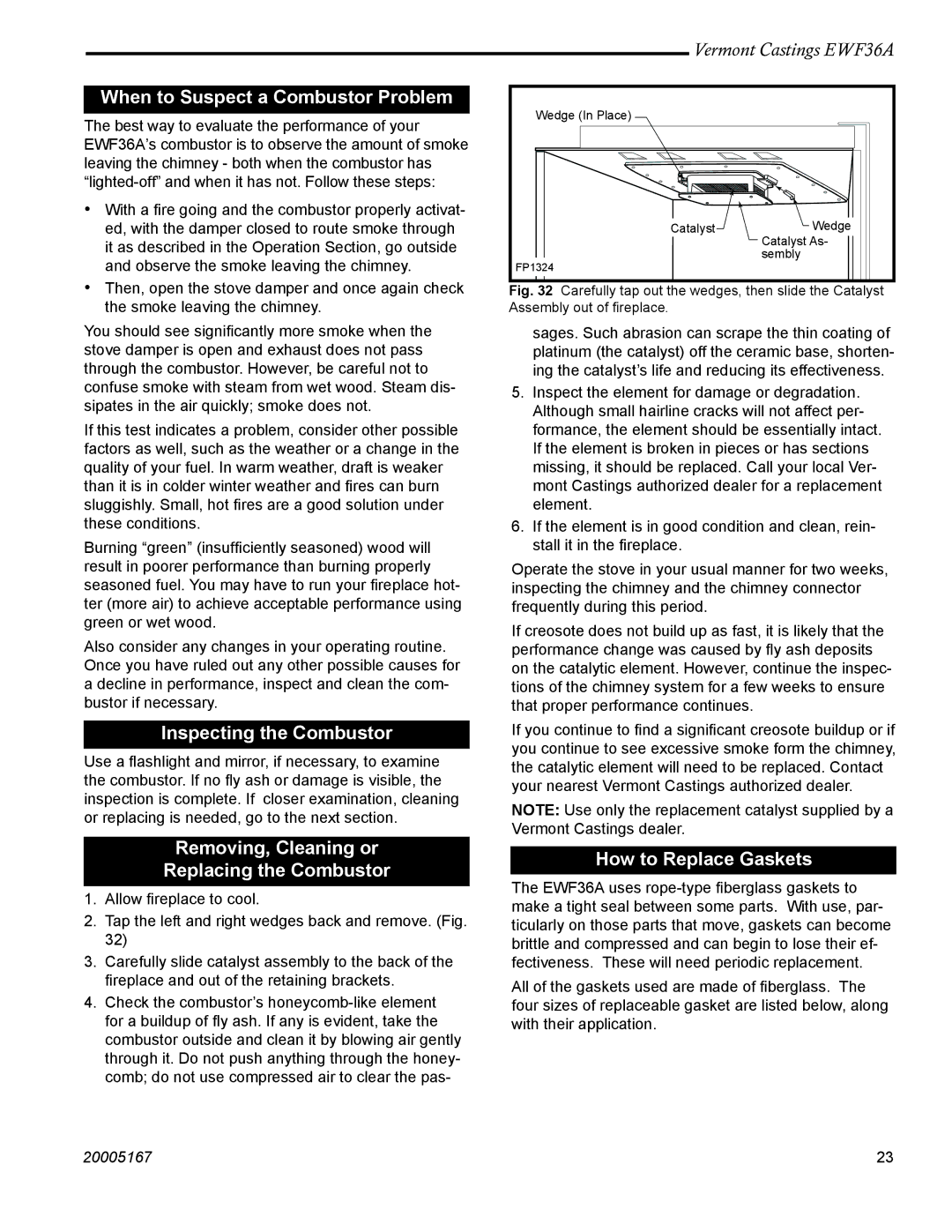
When to Suspect a Combustor Problem
The best way to evaluate the performance of your EWF36A’s combustor is to observe the amount of smoke leaving the chimney - both when the combustor has
•With a fire going and the combustor properly activat- ed, with the damper closed to route smoke through it as described in the Operation Section, go outside and observe the smoke leaving the chimney.
•Then, open the stove damper and once again check the smoke leaving the chimney.
You should see significantly more smoke when the stove damper is open and exhaust does not pass through the combustor. However, be careful not to confuse smoke with steam from wet wood. Steam dis- sipates in the air quickly; smoke does not.
If this test indicates a problem, consider other possible factors as well, such as the weather or a change in the quality of your fuel. In warm weather, draft is weaker than it is in colder winter weather and fires can burn sluggishly. Small, hot fires are a good solution under these conditions.
Burning “green” (insufficiently seasoned) wood will result in poorer performance than burning properly seasoned fuel. You may have to run your fireplace hot- ter (more air) to achieve acceptable performance using green or wet wood.
Also consider any changes in your operating routine. Once you have ruled out any other possible causes for a decline in performance, inspect and clean the com- bustor if necessary.
Inspecting the Combustor
Use a flashlight and mirror, if necessary, to examine the combustor. If no fly ash or damage is visible, the inspection is complete. If closer examination, cleaning or replacing is needed, go to the next section.
Removing, Cleaning or
Replacing the Combustor
1.Allow fireplace to cool.
2.Tap the left and right wedges back and remove. (Fig. 32)
3.Carefully slide catalyst assembly to the back of the fireplace and out of the retaining brackets.
4.Check the combustor’s
Vermont Castings EWF36A
Wedge (In Place) |
|
Catalyst | Wedge |
| Catalyst As- |
| sembly |
FP1324 |
|
Fig. 32 Carefully tap out the wedges, then slide the Catalyst Assembly out of fireplace.
sages. Such abrasion can scrape the thin coating of platinum (the catalyst) off the ceramic base, shorten- ing the catalyst’s life and reducing its effectiveness.
5.Inspect the element for damage or degradation. Although small hairline cracks will not affect per- formance, the element should be essentially intact. If the element is broken in pieces or has sections missing, it should be replaced. Call your local Ver- mont Castings authorized dealer for a replacement element.
6.If the element is in good condition and clean, rein- stall it in the fireplace.
Operate the stove in your usual manner for two weeks, inspecting the chimney and the chimney connector frequently during this period.
If creosote does not build up as fast, it is likely that the performance change was caused by fly ash deposits on the catalytic element. However, continue the inspec- tions of the chimney system for a few weeks to ensure that proper performance continues.
If you continue to find a significant creosote buildup or if you continue to see excessive smoke form the chimney, the catalytic element will need to be replaced. Contact your nearest Vermont Castings authorized dealer.
NOTE: Use only the replacement catalyst supplied by a Vermont Castings dealer.
How to Replace Gaskets
The EWF36A uses
All of the gaskets used are made of fiberglass. The four sizes of replaceable gasket are listed below, along with their application.
20005167 | 23 |
